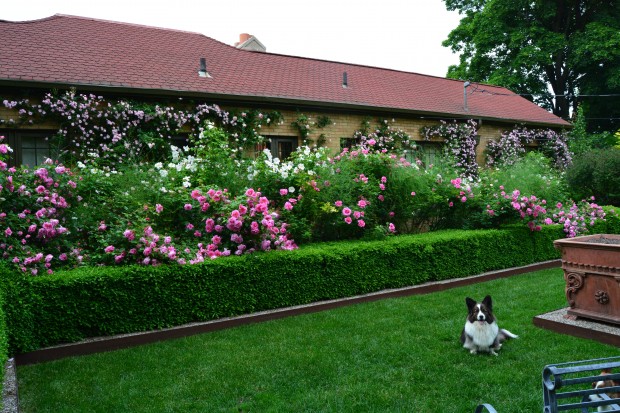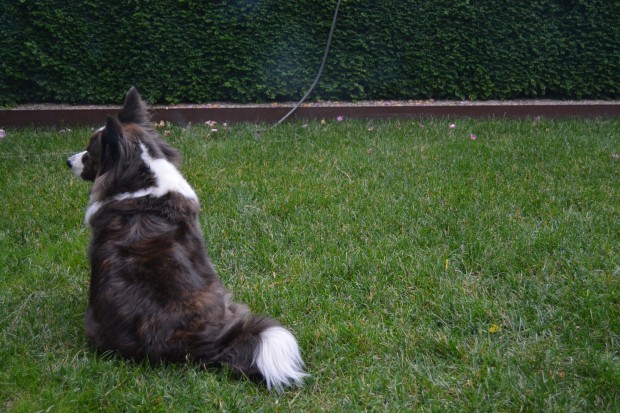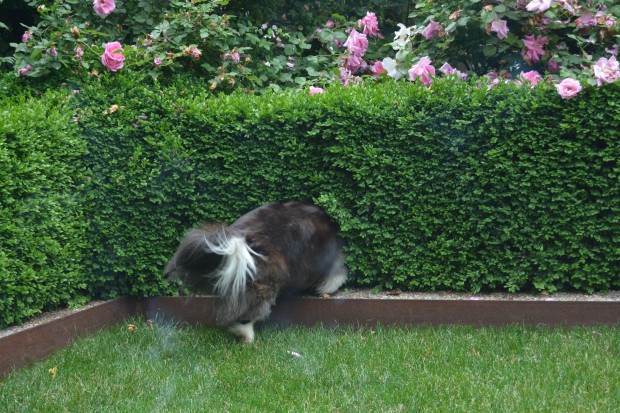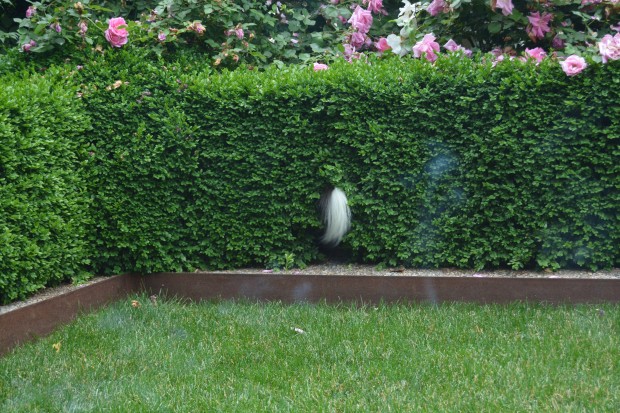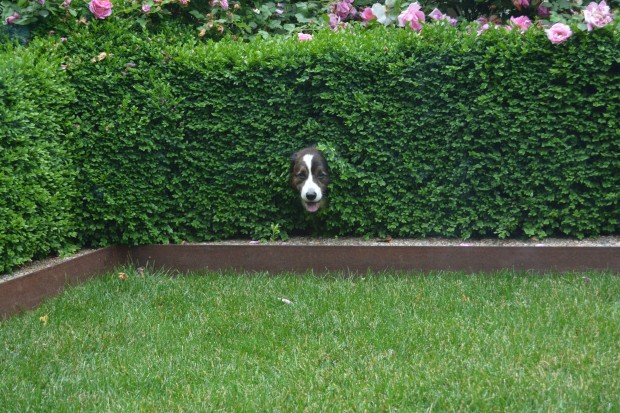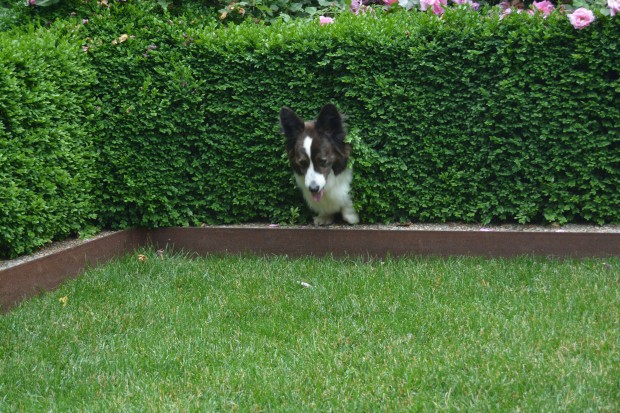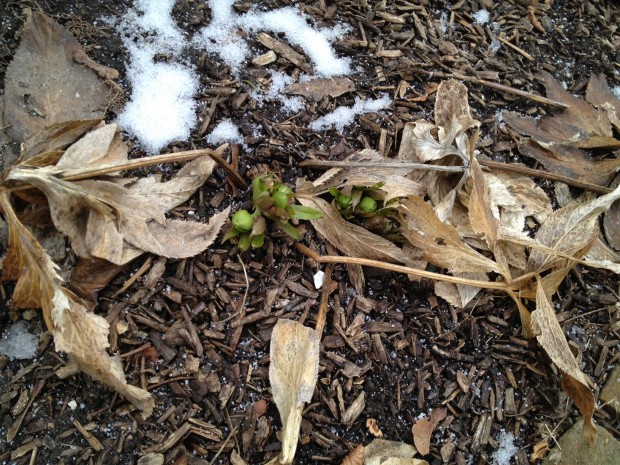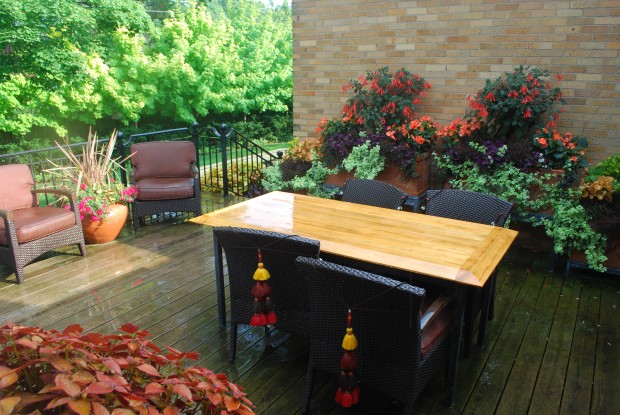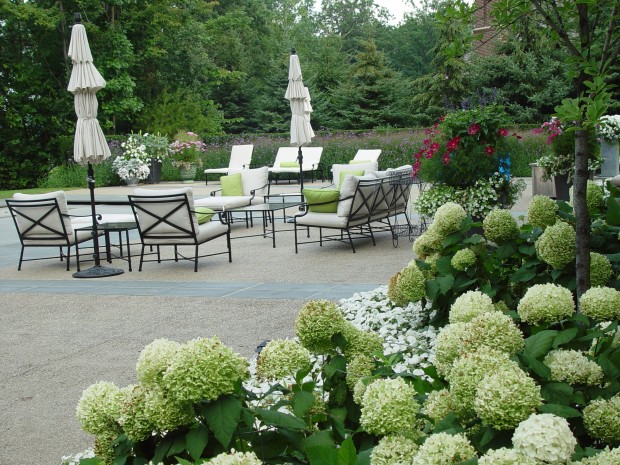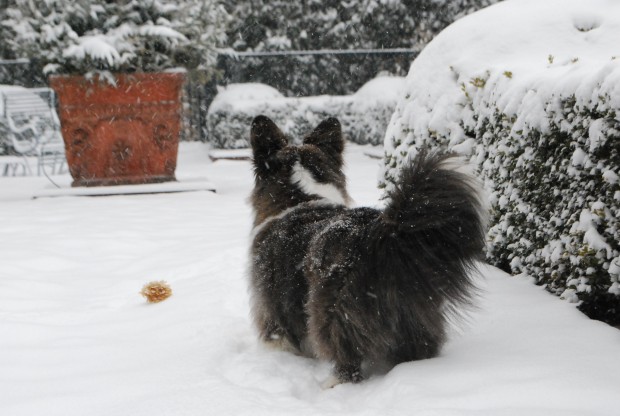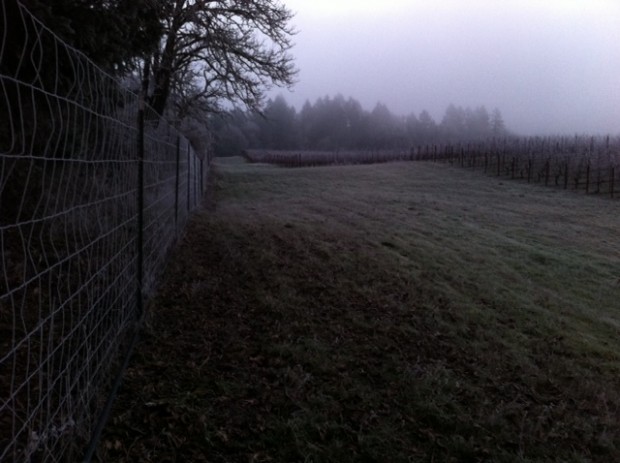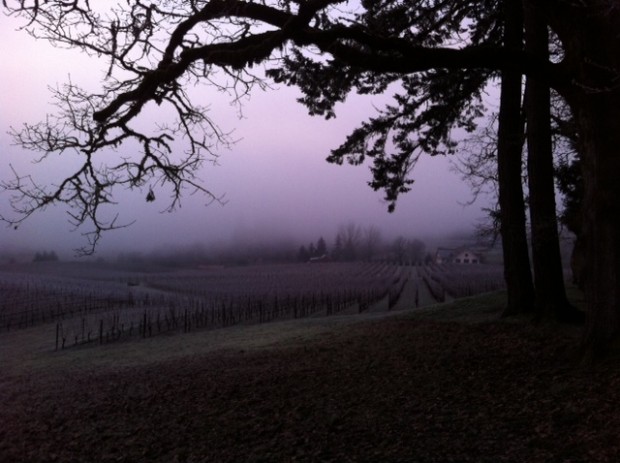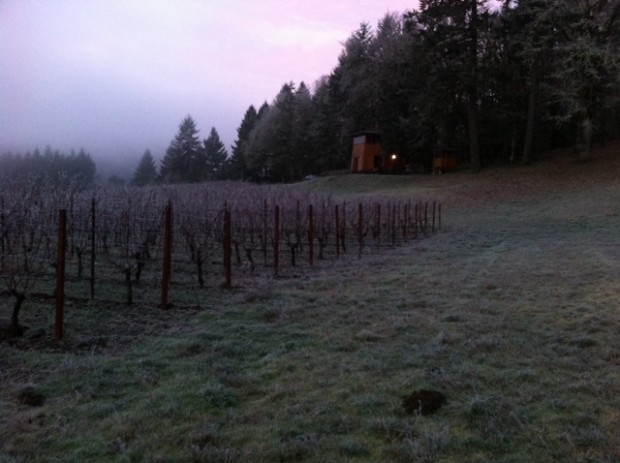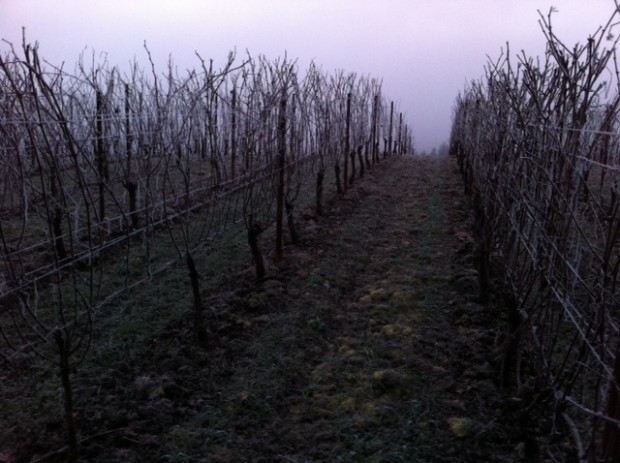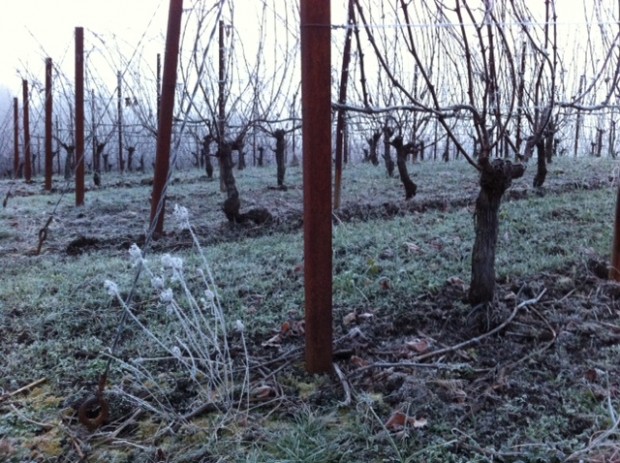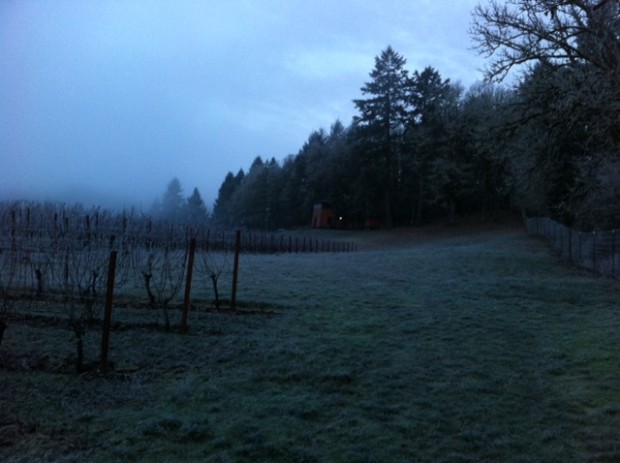At A Glance: In And Out
Garden Designers Roundtable: Mistaken
The topic for the Garden Designers Roundtable-mistakes. I appreciate the timing of this topic, as blunder season is just about here. I invariably misinterpret nature’s intent with regard to spring. I am sure that spring has arrived, always weeks in advance of the real thing. I am anxiously poking around, looking for the crocus and the hellebores. If I am lucky, that poking will not damage tender shoots just emerging from the ground. The true meaning of misstep? Tulip leaves when they first emerge in my zone are the same color as the muddy soil. Given that I never remember where I have planted them, I am as likely to smash them flat as not. Every step I make on soil that is soaking wet from the thaw forces the life giving oxygen out of the soil. Plants thrive in friable soil, and generally dislike compacted soil. Why am I milling about in the garden when I know better? The leaves of the hellebores are limp and brown now-and crying for a cleanup. I am sure the number of emerging flowers I have snipped off thinking they were leaf stalks is appallingly high. Were I to endure the mess for another week, the difference between leaf stalks and flower stalks would be obvious. Yet here I am, in error. Franklin P Jones put it so eloquently: Experience is that marvelous thing that enables you to recognize a mistake when you make it again.
Once the perennials begin to emerge, the bare spaces that would be perfect for spring bulbs are painfully obvious. Spots for snowdrops-how is it that I failed to see them 5 months ago, when I could have planted? The chionodoxa I did plant at the edge of a path as the spot was easy to get to-could I really have forgotten the edge of this path is part of the Corgi path? Was that outcome not as obvious last fall as it is right now? It will be months before my small perennial garden will be anything to look at. I could have tulips and daffodils on the way. Phlox divaricata-every year I long for it. Every year I do not plant it. A lost opportunity is one thing, but a lost opportunity that repeats itself year after year-a whopper blooper.
Later I will find those mistakes that simply represent deficient knowledge. Plants are very specific about what they want. When they don’t get what they want, they have that listless and unenthusiastic look about them. Or they die. Wanting that catmint to thrive in a slightly too shady spot in slightly too heavy soil-that want washes over me all the time. What would prosper in that spot, I don’t want. The idea that the nature will suspend disbelief just for me-what is that? Off sides is off sides. I would conservatively estimate that my plant reference library has 50 volumes. And I have a computer that works. In spite of that, I persist in putting plants in the wrong place. On rare occasions, I get lucky. I had to have a clematis growing on my garden bench-the romance of tat idea was irresistible. Though the spot had failure written all over it, I planted anyway. Turns out, there is enough sun 4 feet off the ground to keep that clematis happy. I know a certain gardener with a gift for making a mistake seem like a brilliant choice. From Henry James, She had an unequalled gift… of squeezing big mistakes into small opportunities.
Gardeners derive satisfaction from many different things. Some gardeners choose to grow food. Others like tropical plants in pots. Others want to grow plants and sell them. Others swoon over conifers, or rock garden plants. Others intend to reforest a city. A relationship with nature is not necessarily a garden-it could be a wild place untouched by designing hands. Entertaining outdoors, putting up lights at the holidays, and camping.-these are as much an experience of gardening as the parterres at Vaux Le Vicomte. Given that the sky is the limit, that the opportunity for self expression is always there, I think it is a mistake-not to garden. Gardening is good for people. Your garden should be just that-yours. From Oscar Wilde, “Be yourself; everyone else is already taken”.
The most grievous error I see gardeners make is to give up a dream of having a garden environment because they could not have it all at once. The best part about plants is that they grow. A bareroot tree planted in the spring and looked after will grow. Yes, the mighty oak from the little acorn grew. A slew of boxwood cuttings, placed in and grown on in a nursery bed, can one day become the most gorgeous knot garden imaginable. Hellebores are gorgeous-but notoriously slow growing. Large plants are pricey, for just that reason. But little hellebores are readily available, and will grow into specimen sized beauties before you know it. Now is a very good time to plant one. From Edmund Burke: Nobody made a greater mistake than he who did nothing because he could do only a little.
The other members of the Roundtable no doubt will have their own views on mistakes-please read on!
Mary Gallagher Gray : Black Walnut Dispatch : Washington, D.C.
Debbie Roberts : A Garden of Possibilities : Stamford, CT
David Cristani: The Desert Edge: New Mexico
The Garden Designer’s Roundtable: Romance
What makes for a romance? An attraction that cannot be denied. An attraction that evolves from the excitement generated by the hope that a relationship might lead to a steadfast commitment. The romance suggested and generated by the possibility of love-who hasn’t experienced it? Gardeners romance their gardens-meaning they seek to establish a relationship with their environment, their love of plants, and their property to a mutually satisfying end. I never met a gardener that was not committed to the long term. However, mutually satisfying outcomes are rare. Things go wrong. Plants die. Taste’s change. More than rare, garden outcomes that stir the heart are short lived. Ephemeral. This makes the possibility of true romance all the more desirable.
Nature-the object of every gardener’s sincere affection. On occasion, that love is returned. Sometimes I am face to face with it in such a way that takes my breath away. But more often than not, nature has another idea in mind. I have had my hopes dashed more often than I care to recall. The weather here last spring was anything but. All of the efforts made to protect the spring flower buds-spurned. There are less dramatic challenges to one’s love for the garden. A lack of rain-or too much. The neighbor’s kid or the neighborhood rabbit who snaps all the lily buds off. The specimen evergreen that is not so happy where you have planted it. The effort it takes to improve the organic content of the soil. I suppose the spring will eventually come when I think I’ve had enough-but it hasn’t happened yet.
Anyone who gardens long enough realizes that a romance has its ups and downs. There are on occasion those perfect moments. An hour or a day or a season that enchants and utterly satisfies. They could be very simple, and not so readily apparent to a casual observer. The sun emerging after a spring rain. A quiet hour spent weeding. Watching a hummingbird feed. How the roses look just before they bloom.
That June day several years when the roses were blooming like I had never seen them before-heart stoppingly romantic. That summer day when all is good enough in the garden such there is time to take time to enjoy it. There are those perfect moments that come when you least expect them, and are over before you know it. That fairly accurately describes my relationship with nature. Never easy, and often times irritating and disappointing. Despite all that does not work, a life without a serious relationship with nature has no appeal to me.
This cold windy and snowy February moment that Milo and I shared in the garden-satisfying indeed. I am sure the other members of the Garden Designer’s Roundtable have an equally personal romance with nature-be sure to read on.
Lesley Hegarty & Robert Webber : Hegarty Webber Partnership : Bristol, UK
David Cristiani : The Desert Edge : Albuquerque, NM
Debbie Roberts : A Garden of Possibilities : Stamford, CT
Jocelyn Chilvers : The Art Garden : Denver, CO
Mary Gallagher Gray : Black Walnut Dispatch : Washington, D.C.
Vineyard In Winter
Tuesday’s post for the Garden Designers Roundtable on inspiration was a longer than usual post for me. Why? The topic of inspiration is of serious interest to any professional designer- that includes me. Without inspiration, design is pedestrian. Plodding and sleepy. Solid and exciting design doesn’t appear with the wave of a wand-even after years of experience designing. Every new project needs to be imagined in just that way-new. It seems obvious that exposure to new things in horticulture, the arts, and design would keep the eye fresh. But perhaps exposure to old things might be just as inspiring.
Does anyone need an landscape and garden to live? This is a topic that would invite debate, but that is not my intention here. People do not need landscape in the same way that they need food ( which has to be grown), and a relationship with nature that permits survival. Most certainly there was a time when no person was afforded the luxury of a landscape that did not also feed them. The invention of espaliered trees came from a monk, experimenting in how to coax maximum yields of fruit from his trees, in order to feed the entire monastery. A ha-ha is a change of grade which kept the farm animals out of the kitchen gardens adjacent to the house. The landscape and garden at Monticello was designed around the growing of crops for food. The need for farms that produces food is elemental, and ancient.
I have a big interest in how agriculture has influenced landscape design. Also of interest is how growing landscapes are thoughtfully and meticulously designed. Their design is focused on cultivation, harvesting, and yields. This vineyard is planted with Chardonnay grapes. The rows are spaced equally. Why this particular spacing? Perhaps it is based on the width of a vehicle that inspects the vines. Or perhaps it is a comfortable space for harvesting grapes. I feel very certain that the spacing has everything to do with the efficient use of the land. This landscape is not intended to be ornamental. It is intended to be a part of a maximum yield with the most simple cultivation effort. A beautiful byproduct? How breathtaking is a grape orchard, following the natural contour of the land?
I find how the rows are laid out, how the vines are attached to the fences, how the vines are pruned, how the land rolls, and how the vineyard looks in the early morning on a winter day – satisfying. The repetition of forms is both inspiring and comforting. I like the idea that the farm draws sustenance from the ground-and that the interaction between nature and people also provides sustenance to the eye. I like landscapes that work. They feels comfortable, and meaningful.
This vineyard is comprised of thousands of grape vines, planted with the same spacing, all pruned the same. Though the land rolls up and down, the planting repeats itself. Though I don’t grow food, or cook, I admire the beauty that is a working farm.
A vineyard in January is a good place to visit. It is as good as any gallery or museum. The utter cold makes speech difficult-all the better. Feeling the history of the cultivation of the ground is bound to inspire something.
Such extraordinarily cold weather we are experiencing now. I have bundled up, and piled on the clothes. Though extreme cold can damage plants, the frost beautifully desribes the shapes of the plants, and the structures on which they are grown.
I like a landscape that is attuned to, and features the weather, whatever that weather might be. No landscape is better at this than a farm.
So cold right now. So warm-the the evidence of the day’s work.
- « Previous Page
- 1
- …
- 5
- 6
- 7
- 8
- 9
- …
- 22
- Next Page »
